# AWS Cognito
This document describes the use of AWS Cognito as an identity provider with Pomerium.
# Setting up AWS Cognito
Log in to the AWS Console account.
Go to Services on the top menu, and then search for Cognito

Once you have selected Cognito, you will be presented with the option of Manage User Pools or Manage Identity Pools. Pick Manage User Pools
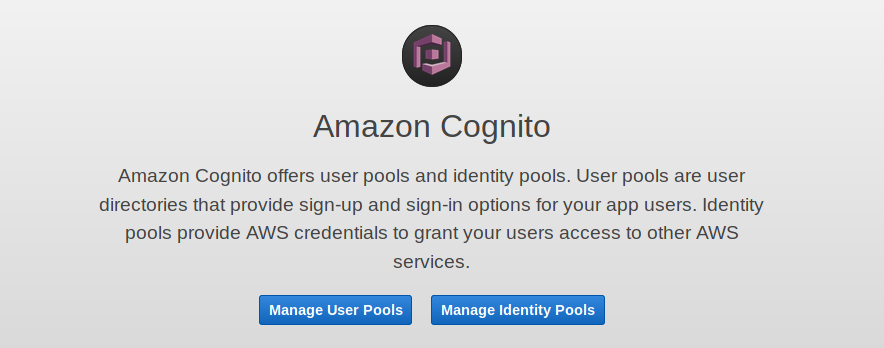
You will now be shown any User Pools you have created already, or the option to Create a User Pool
Give the pool a name, and then choose to either Review defaults or Step through settings. It is entirely up to you as to whether you choose to Review the defaults (and make some customization) or to set up every setting individually.

Assuming you have chosen to Review defaults, you will be presented with the following: -
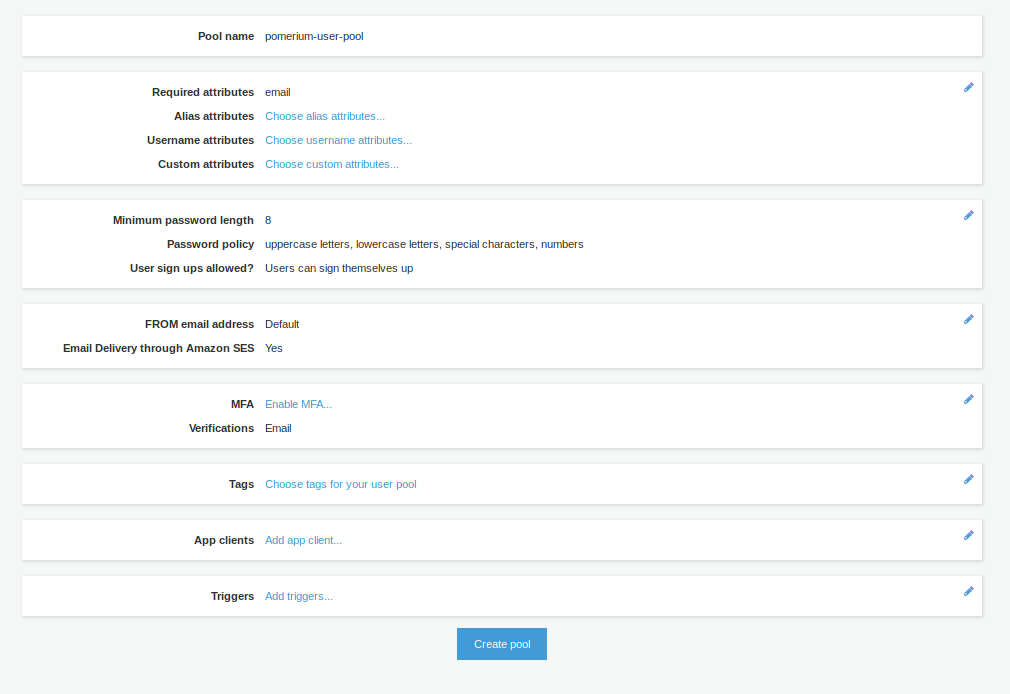
You can enable Multi-Factor Authentication (MFA), change your Password requirements, Tag the pool, among many other settings.
If you need to make changes after creating your pool, be aware that some settings will recreate the pool rather than update the existing pool. This will also generate new Client IDs and Client Secrets. An example would be changing How do you want your end users to sign in? in Attributes from Username to Email address or phone number
Once you have created the pool, you can create an App Client. This is where you will configure the Pomerium application settings. Choose Add an App Client
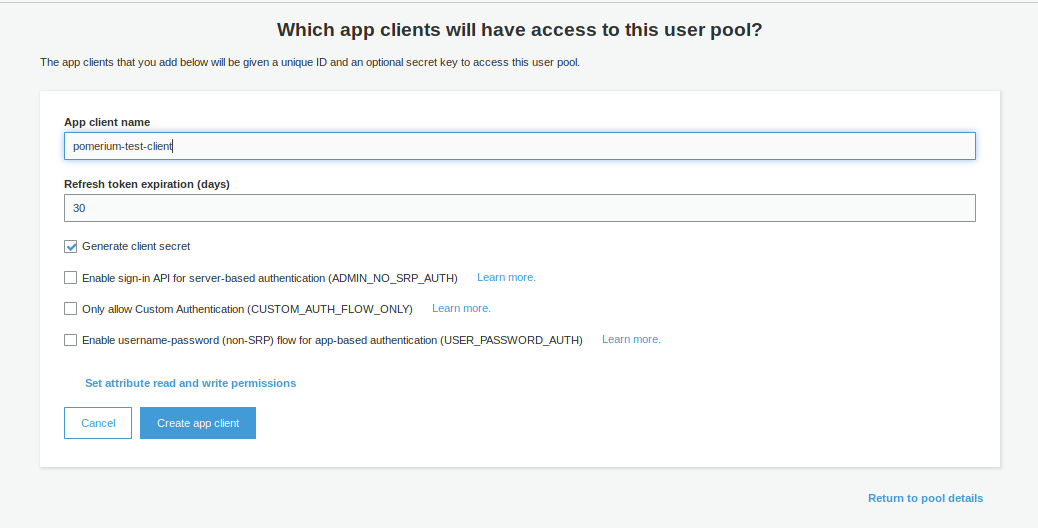
Once the Client is created, you should then be able to retrieve the Client ID and the Client Secret
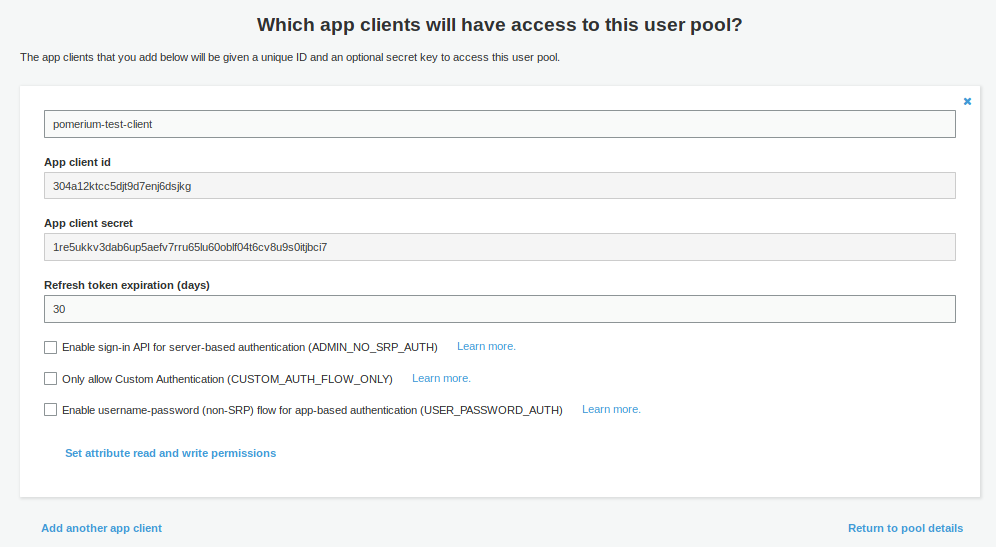
After this is done, go to App client settings (in the Side menu under App Integration)
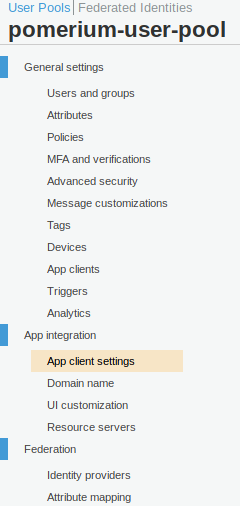
In the setings for Pomerium app, put in the following details
| Field | Description |
|---|---|
| Callback URL(s) | https://authenticate.corp.example.com/oauth2/callback |
| Enabled Identity Providers | Choose Cognito User Pool, unless you have set up another Identity Provider (eg SAML) |
| Allowed OAuth Flows | Authorization code grant |
| Allowed OAuth Scopes | Email, OpenID, Profile |
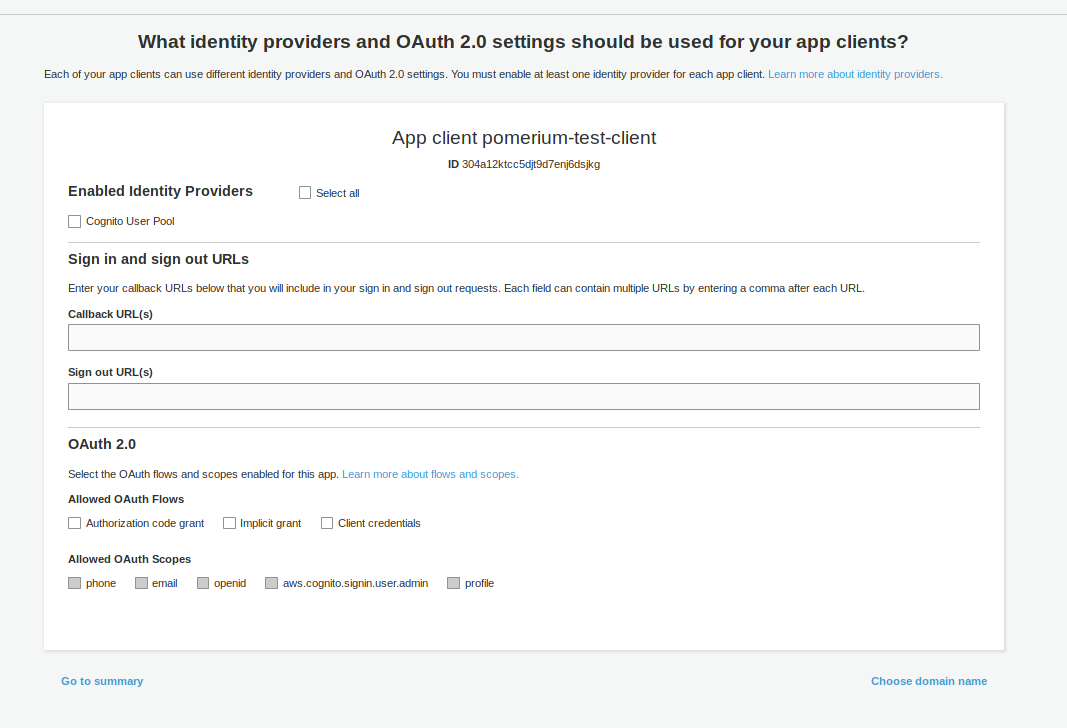
IMPORTANT: For OAuth2 to work correctly with AWS Cognito, you must configure a Domain name. This is under App integration in the side menu
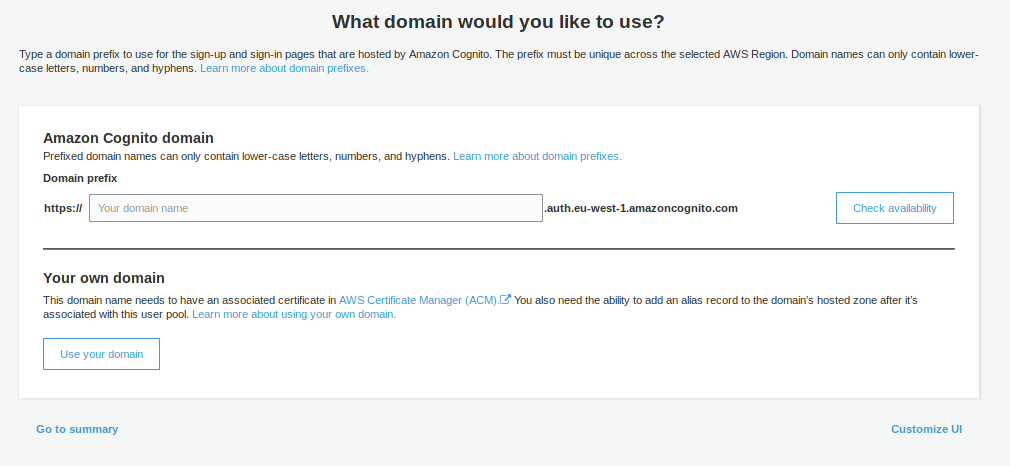
You can choose whether to use your own Domain Name, or use an AWS-provided one. The AWS-provided domain names are in the format https://${DOMAIN-PREFIX}.auth.${AWS-REGION}.amazoncognito.com
# Pomerium Configuration
Once you have configured AWS Cognito, you can place your settings in the Pomerium config. An example is below: -
IDP_PROVIDER="oidc"
IDP_PROVIDER_URL="https://cognito-idp.${AWS-REGION}.amazonaws.com/${USER-POOL-ID}"
IDP_CLIENT_ID="304a12ktcc5djt9d7enj6dsjkg"
IDP_CLIENT_SECRET="1re5ukkv3dab6up5aefv7rru65lu60oblf04t6cv8u9s0itjbci7"
IDP_SCOPES="openid,profile,email"
To retrieve the User Pool ID, go to General Settings in the Cognito Side menu within your pool, and you'll see the Pool ID (just above the Pool ARN)
An example of using this in a Kubernetes ConfigMap is below: -
apiVersion: v1
data:
config.yaml: |
# Main configuration flags : https://www.pomerium.io/reference/
authenticate_service_url: https://k8s-auth-prod.example.com # The URL you have set up for the Pomerium Authentication service
authorize_service_url: https://pomerium-authorize-service.default.svc.cluster.local
idp_provider: oidc
idp_provider_url: https://cognito-idp.${AWS-REGION}.amazonaws.com/${USER_POOL_ID}
idp_client_id: 304a12ktcc5djt9d7enj6dsjkg
idp_client_secret: "1re5ukkv3dab6up5aefv7rru65lu60oblf04t6cv8u9s0itjbci7"
idp_scopes: ["openid", "email", "profile"]
kind: ConfigMap
metadata:
name: pomerium-config
